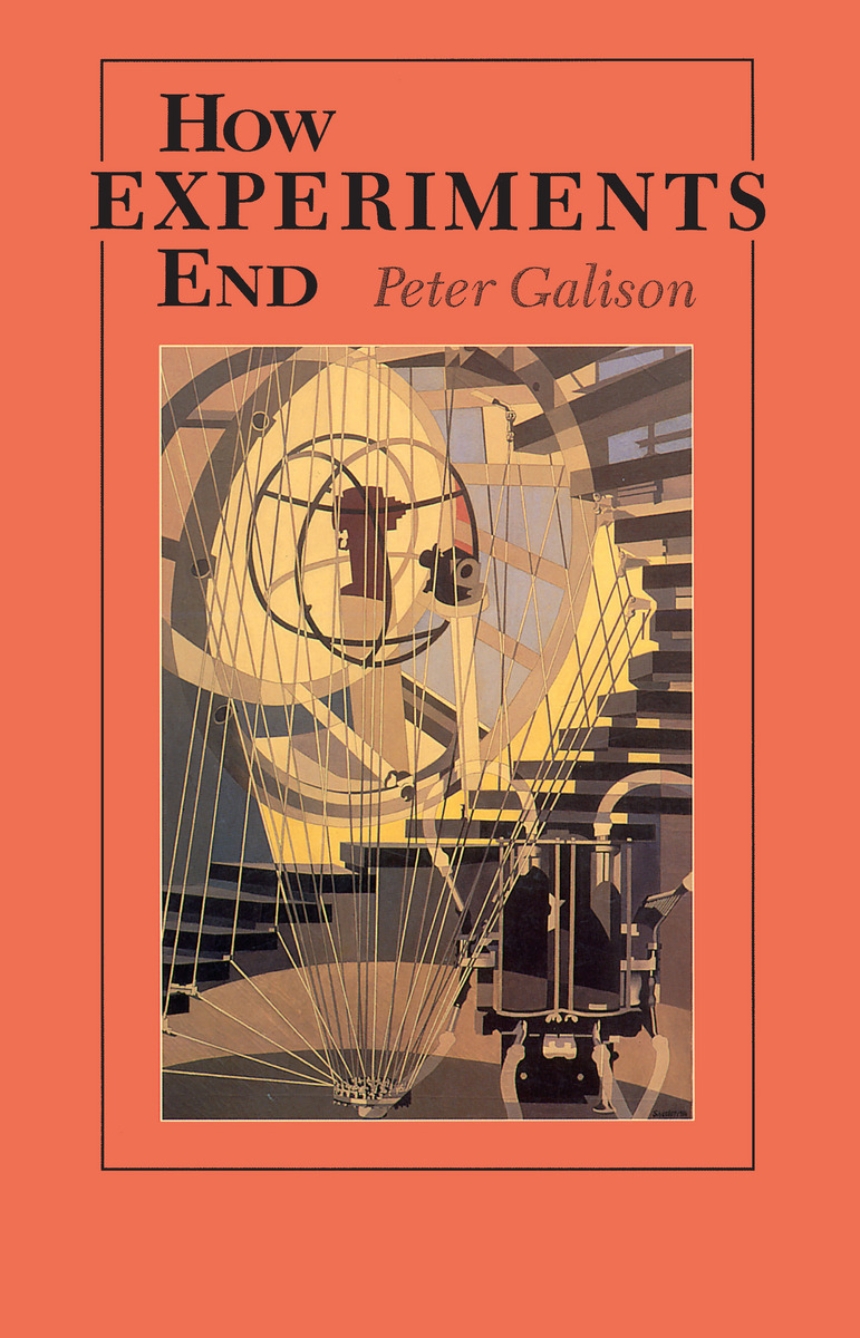How Experiments End
"Galison provides excellent histories of three experimental episodes: the measurement of the gyromagnetic ratio of the electron, the discovery of the mu meson, or muon, and the discovery of weak neutral currents. These studies of actual experiments will provide valuable material for both philosophers and historians of science and Galison’s own thoughts on the nature of experiment are extremely important. . . . Galison has given both philosophers and historians much to think about. I strongly urge you to read this book."—Allan Franklin, British Journal of the Philosophy of Science
"Anyone who is seriously concerned with understanding how research is done should read this. There have been many books on one or another part of its subject matter but few giving such insights into how the research is done and how the consensus of discovery is arrived at."—Frank Close, New Scientist
"[Galison] is to be congratulated on producing a masterpiece in the field."—Michael Redhead, Synthese
"How Experiments End is a major historical work on an exciting topic."—Andy Pickering, Isis
"Anyone who is seriously concerned with understanding how research is done should read this. There have been many books on one or another part of its subject matter but few giving such insights into how the research is done and how the consensus of discovery is arrived at."—Frank Close, New Scientist
"[Galison] is to be congratulated on producing a masterpiece in the field."—Michael Redhead, Synthese
"How Experiments End is a major historical work on an exciting topic."—Andy Pickering, Isis
Table of Contents
Preface
1. Introduction
1.1. Strategies of Demonstration
1.2. Errors and Endings
1.3. Presuppositions and the Scope of Experimental Autonomy
1.4. Overview
2. From Aggregates to Atoms
2.1. History versus Statistics
2.2. The Apparatus of Averages
2.3. Molecular Magnets
2.4. The Electron
2.5. Einstein’s Experiment
2.6. Einstein’s Presuppositions
2.7. The Forgotten Influence of Terrestrial Magnetism
2.8. Expectations Defied
2.9. Ducks, Rabbits, and Errors
2.10. The Scylla and Charybdis of Ending an Experiment
3. Particles and Theories
3.1. Particles One by One
3.2. Millikan’s Cosmic Rays
3.3. Beliefs behind the "Birth Cry of Atoms"
3.4. Contesting Instruments and Theories
3.5. Testing Quantum Mechanics
3.6. Quantum Theory Fails
3.7. A New Kind of Radiation
3.8. Regrouping the Phenomena
3.9. Two Cases for a New Particle
3.10. Corroboration by Theory, Corroboration by Experiment
3.11. Persuasive Evidence and the End of Experiments
4. Ending a High-Energy Physics Experiment
4.1. The Scale of High-Energy Physics
4.2. The Collective Wisdom: No Neutral Currents
4.3. Symmetries and Infinities
4.4. Priorities
4.5. Good Reasons for Disbelief
4.6. The Role of Theorists
4.7. Background and Signal
4.8. Do Neutral Currents "Really Exist"?
4.9. A Picture Book Event
4.10. The Expanding Circle of Belief
4.11. Models, Background, and Commitment
4.12. Experiment 1A: Parts and Participants
4.13. Short Circuits and High Theory
4.14. First Data
4.15. "Shadow of a Suspicion"
4.16. Dismantling an Ending
4.17. "I Don’t See How to Make These Effects Go Away"
5. Theoretical and Experimental Cultures
5.1. Levels of Theoretical Commitment
5.2. Long-Term Constraints
5.3. Middle-Term Constraints
5.4. Short-Term Constraints
5.5. Carving Away the Background
5.6. Directness, Stability, and the Stubbornness of Phenomena
6. Scale, Complexity, and the End of Experiments
6.1. The Assembly of Arguments
6.2. Collaborations and Communities
6.3. Subgroups, Arguments, and History
6.4. The End
Appendix: Authors of Papers on Neutral Currents
Abbreviations for Archival Sources
Bibliography
Index
1. Introduction
1.1. Strategies of Demonstration
1.2. Errors and Endings
1.3. Presuppositions and the Scope of Experimental Autonomy
1.4. Overview
2. From Aggregates to Atoms
2.1. History versus Statistics
2.2. The Apparatus of Averages
2.3. Molecular Magnets
2.4. The Electron
2.5. Einstein’s Experiment
2.6. Einstein’s Presuppositions
2.7. The Forgotten Influence of Terrestrial Magnetism
2.8. Expectations Defied
2.9. Ducks, Rabbits, and Errors
2.10. The Scylla and Charybdis of Ending an Experiment
3. Particles and Theories
3.1. Particles One by One
3.2. Millikan’s Cosmic Rays
3.3. Beliefs behind the "Birth Cry of Atoms"
3.4. Contesting Instruments and Theories
3.5. Testing Quantum Mechanics
3.6. Quantum Theory Fails
3.7. A New Kind of Radiation
3.8. Regrouping the Phenomena
3.9. Two Cases for a New Particle
3.10. Corroboration by Theory, Corroboration by Experiment
3.11. Persuasive Evidence and the End of Experiments
4. Ending a High-Energy Physics Experiment
4.1. The Scale of High-Energy Physics
4.2. The Collective Wisdom: No Neutral Currents
4.3. Symmetries and Infinities
4.4. Priorities
4.5. Good Reasons for Disbelief
4.6. The Role of Theorists
4.7. Background and Signal
4.8. Do Neutral Currents "Really Exist"?
4.9. A Picture Book Event
4.10. The Expanding Circle of Belief
4.11. Models, Background, and Commitment
4.12. Experiment 1A: Parts and Participants
4.13. Short Circuits and High Theory
4.14. First Data
4.15. "Shadow of a Suspicion"
4.16. Dismantling an Ending
4.17. "I Don’t See How to Make These Effects Go Away"
5. Theoretical and Experimental Cultures
5.1. Levels of Theoretical Commitment
5.2. Long-Term Constraints
5.3. Middle-Term Constraints
5.4. Short-Term Constraints
5.5. Carving Away the Background
5.6. Directness, Stability, and the Stubbornness of Phenomena
6. Scale, Complexity, and the End of Experiments
6.1. The Assembly of Arguments
6.2. Collaborations and Communities
6.3. Subgroups, Arguments, and History
6.4. The End
Appendix: Authors of Papers on Neutral Currents
Abbreviations for Archival Sources
Bibliography
Index
